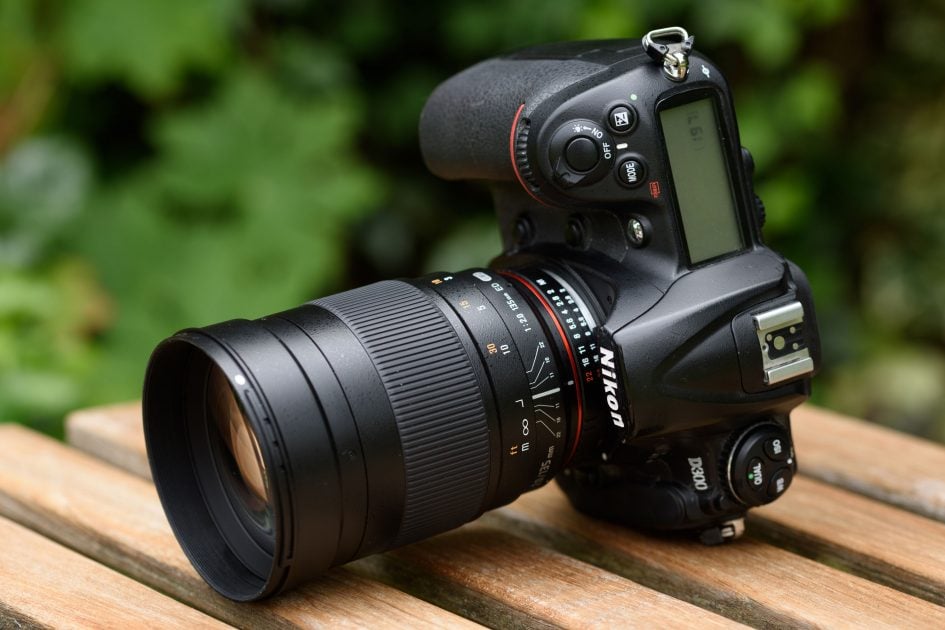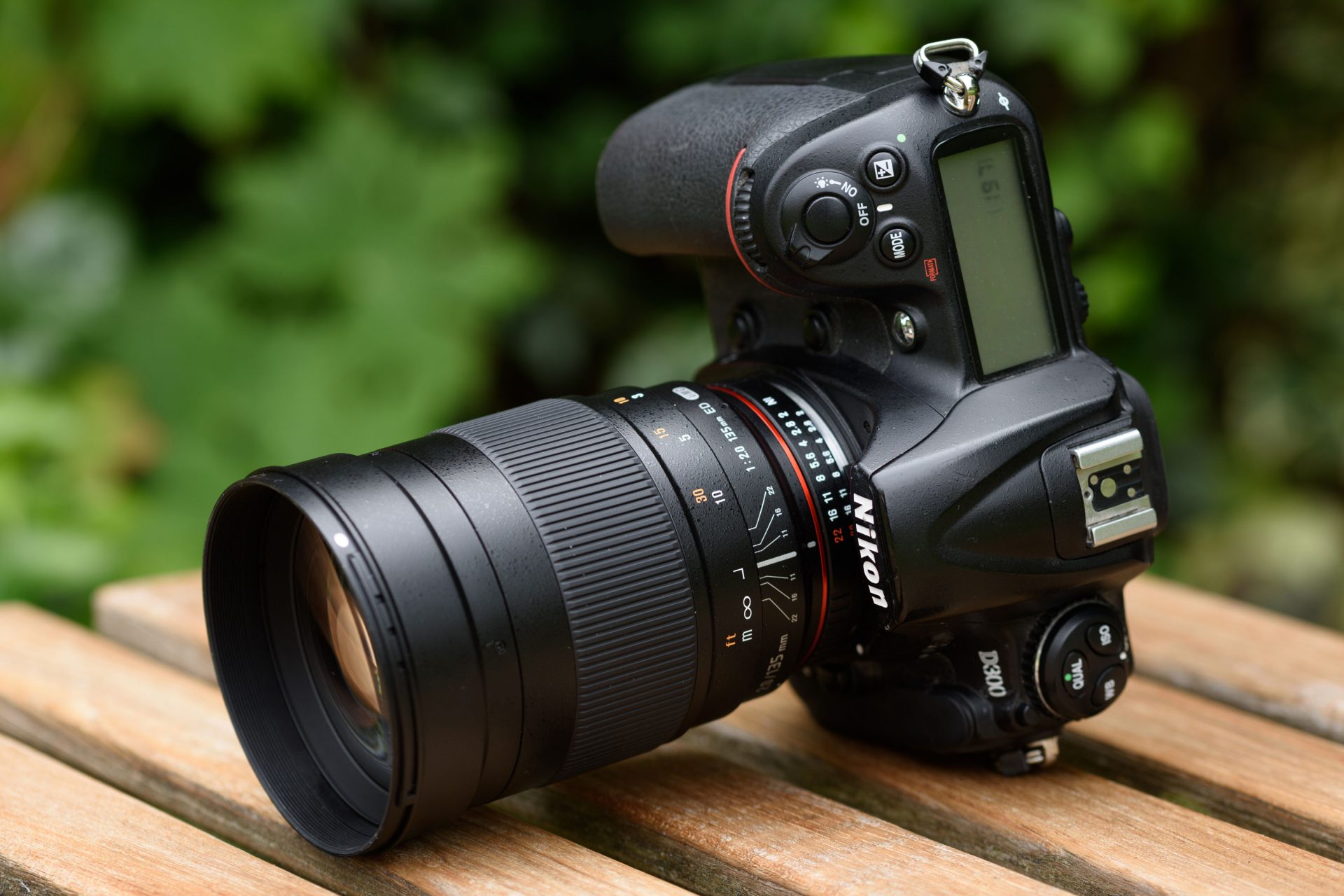Samyang 135mm f2 review
-
-
Written by Thomas
Verdict
The Samyang 135mm f2.0 ED UMC is a top-performing lens. It delivers beautiful-looking images with excellent contrast and sharpness on a high resolution full-frame camera, even with the aperture opened to f2.0. In addition it has the very low longitudinal CAs of an apochromatic lens and offers a beautiful background Bokeh. And this all at a low price of 500 EUR. So what’s not to like about this lens?
The biggest let-down of this lens is it’s manual focus only. And this is more critical than a wide or standard lens because the larger magnifications when shooting with a 135mm lens makes the depth of field shallower and thus focus harder to nail. If you’re similar to me at manual focusing you have to cope with the risk of having around 40-70% of your shots with less than optimal focus/sharpness – unless you work from a tripod. This certainly is a killer for many photographers who need to nail their shot with only one try – and fast. They should absolutely avoid this lens and look for an alternative with autofocus, there’s no denying it. But if you work from a tripod using magnified live-view, have the chance to swap the focusing screen for one better-suited to manual focusing, or simply have the time to take a second or third shot if necessary, then you need not shy away from considering this lens. Plus if you mount it on a modern mirrorless camera, you can exploit technologies like focus peaking to further ease manual focusing.
Let’s see how the new lens compares to the competition.

Compared to Zeiss 135mm f2.0 Apo Sonnar
The Zeiss 135mm f2.0 Apo Sonnar is one of the best 135/2.0 lenses available. It delivers very sharp images with crisp contrast and very fine resolution across the board, even wide open (see my Zeiss 135mm f2.0 Apo Sonnar review). And this performance is coupled with a tank-like build-quality. But the price-tag is very high at 1800 USD/EUR and this lens too is manual focus only!
The biggest difference between the Samyang and the Zeiss (apart from price) is build quality: If you have the Samyang alone it might not feel too flimsy. But have both the Zeiss and the Samyang in your hands and you feel there’s a world of difference between them: After meeting with the Zeiss, “plasticky” is the most appropriate word for the Samyang in comparison. And although I have no proof yet, I truly believe that the Zeiss can take more abuse than the Samyang and will last longer under demanding field conditions.
Comparing optical qualities the differences are not so clear-cut: The Zeiss has a little less field-curvature and less vignetting from f4 onwards plus a bit larger maximum magnification and a little better transmission (i.e. it lets a bit more light through at f2.0 than the Samyang). But the Samyang makes up by having even less longitudinal CAs than the Zeiss (although the Zeiss is designated Apochromatic), better flare-resistance, and it has the better background Bokeh which really deserves to be called “creamy”. All-in-all I actually prefer the images from the Samyang over the Zeiss.
Compared to Nikon AF DC 135mm 2.0D
The optical design of the aging Nikon DC 135/2.0 is quite unique: It lets you control the distribution of blur in front and behind the plane of sharpest focus. If you need this effect in your photography, then this Nikkor is the lens for you. Be aware though that the 20 year old design has one major deficiency: it has heavy color aberrations when used wide open or at f2.8. Not only tend loCA to cast green outlines around background subjects but there’s also a lot of magenta fringing around bright light sources. To avoid these effects you should stop down to f4.0. The lens is solidly built with lots of metal and it feels like it can take a beating. But at 1300 EUR it is also much more expensive than the Samyang. Personally I’d shy away from a lens that carries a great risk of producing color artifacts at f2.0 and f2.8 from loCA and spherical aberrations. If you don’t need the Defocus-image Control feature or the autofocus I’d rather recommend getting the Samyang or Zeiss instead.
Samyang 135mm f2.0 ED UMC final verdict
Samyang did an excellent job when they designed their version of a 135/2.0 lens: For a 500 EUR lens to meet and even exceed the optical quality of an 1800 EUR Zeiss lens is quite an eye-opener. Only the plasticky feeling of the lens is a let-down. So if you need a robust long-lived lens that can take a beating, the Samyang may not be your first choice. But if you don’t bang around your equipment that might not bother you too much, and don’t forget you can replace this lens three to four times for the price of just one of the Zeiss versions. Like the Zeiss, there’s no image stabilization and no autofocus drive inside that might break-down. But you should clearly understand whether you can cope with manual focus before considering getting this lens.
All-in-all the Samyang 135mm f2.0 ED UMC delivers excellent optical quality at a low price. It thus earns a Highly Recommended. Below I have listed the good and bad points of the Samyang 135mm f/2.0 ED UMC for you.
PS – don’t forget you can support my work next time you order anything at Amazon, B&H or Adorama by first clicking through to them using the links above and in the sidebar. It works for anything you order at any time – thanks for your support!
Summary
Good points:
- Excellent image quality across full-frame sensor even wide open.
- Cheap.
- Great background Bokeh.
- Low loCA.
Bad points:
- No autofocus.
- Plasticky build-quality.
- No weather sealing at the lens mount.
- No image stabilization.
Read on, there’s much more to this review: use the tabs to visit the other pages which include more in depth information, full quality test results, and sample images!

 Samyang did an excellent job when they designed their version of a 135/2.0 lens: For a 500 EUR lens to meet and even exceed the optical quality of an 1800 EUR Zeiss lens is quite an eye-opener. Only the plasticky feeling of the lens is a let-down. So if you need a robust long-lived lens that can take a beating, the Samyang may not be your first choice. But if you don't bang around your equipment that might not bother you too much, and don't forget you can replace this lens three to four times for the price of just one of the Zeiss versions. Like the Zeiss, there's no image stabilization and no autofocus drive inside that might break-down. But you should clearly understand whether you can cope with manual focus before considering getting this lens.
Samyang did an excellent job when they designed their version of a 135/2.0 lens: For a 500 EUR lens to meet and even exceed the optical quality of an 1800 EUR Zeiss lens is quite an eye-opener. Only the plasticky feeling of the lens is a let-down. So if you need a robust long-lived lens that can take a beating, the Samyang may not be your first choice. But if you don't bang around your equipment that might not bother you too much, and don't forget you can replace this lens three to four times for the price of just one of the Zeiss versions. Like the Zeiss, there's no image stabilization and no autofocus drive inside that might break-down. But you should clearly understand whether you can cope with manual focus before considering getting this lens.



